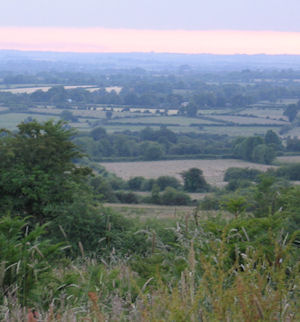| Home | |||||||||||||||||||||||||||||||||||||||||||
| SLIABH BÁN / recreation | |||||||||||||||||||||||||||||||||||||||||||
|
 The mountain has always been a place of natural sacredness and formal religious significance. In 1950 local people built a cross on its summit, to commemorate the Marian Year; and within the last decade the same local community refurbished the cross and organised lighting for it at night. The conservation and recreational schemes and improvements to Sliabh Bán have in recent years been coordinated by the The Sliabh Bán Eco-Tourism Project (SBETP). This was initiated in 1996 with the aim of improving public access to Sliabh Bán and developing it as a sustainable recreational, cultural and bio-diversity resource. A study undertaken by Environmental West Consultants asserted that Sliabh Bán has ‘immense potential for the development of a walking amenity that would give people direct access to local history, archaeology and natural history’. With the active involvement of Coillte, Arigna Leader, FAS and local community groups, the SBETP planned, designed, cleared, developed, mapped and signposted four circular walks around Sliabh Bán. One of these follows the ancient monastic track. These recreational walks include fourteen viewing points, with seating made by local craftsmen. In collaboration with the SBETP Coillte cleared an area near the trig point on the peak of the mountain, and left it unplanted, so that the westward view would remain uninterrupted. A further area was planted with lower-growing native trees and shrubs such as hazel and rowan to encourage native wildlife. A designated picnic area, with seating was built, again with the cooperation of Coillte. An area on the west flank of the mountain, nearest to Clooncagh National School was donated by Coillte to the children of the area, and was planted with native trees such as oak, ash, birch and alder. This area is known as The Children’s Forest. A walkway to it was built to access it, and signposted. The mountain walkways and viewing points are extensively and increasingly used by local people and the wider community alike. Walking groups visit from all over Ireland. A guided walk to the summit for its many overseas vistors is a key part of the programme of the Strokestown International Poetry Festival. Mountain cyclists’ clubs and riding clubs all enjoy the mountain’s peace, quiet, rich wildlife and long views. All these facilities will be lost if an army of noisy turbines, and the roads, maintenance buildings, and the debris from their vast construction, takes over our mountain. |
||||||||||||||||||||||||||||||||||||||||||
| Home | |||||||||||||||||||||||||||||||||||||||||||
